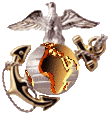Operation Prairie IV
Enemy concentrations of troops and artillery in the DMZ area dictated the reinforcement of the 3d Marine Division. Responding to the demands of the situation, MACV deployed Army Task Force Oregon to the southern two provinces of I Corps in April to allow Marine units to reinforce the northern three provinces. * As a result of the northward shift of Marine forces, Colonel Robert M. Jenkins’ 9th Marines headquarters moved from Da Nang to Dong Ha during 12-16 April. At the same time, III MAF shifted the 2d Battalions of the 4th and 26th Marines from the 1st Marine Division area to the vicinity of Phu Bai.
The introduction of a second regimental headquarters into Quang Tn Province permitted the closing of the 3d Division’s forward command post at Dong Ha after the conclusion of Operation Prairie III. Units operating from Dong Ha reverted to the operational control of the 9th Marines, while the 3d Marines controlled those operating from Camp Carroll.
Operation Prairie IV started on 20 April as a two-regiment search and destroy operation; covering the same area as Prairie III. The concept of employment placed the 3d Battalion, 3d Marines and the 3d Battalion, 9th Marines in the northwest portion of the area of operations. The 9th Marines, using the 1st Battalions of the 4th and 9th Marines, was to cover the vital piedmont area in and around Quang Tn City. The boundary between the two units was just west of the Cam Lo-Con Thien axis.
Initially, the operation confined all units to relatively fixed positions. Lieutenant Colonel Wilson’s 3d Battalion, 9th Marines was charged with the security of Camp Carroll and the outpost at Mai Loc. Wilder’s 3d Battalion, 3d Marines held the Rockpile and placed companies at Ca Lu and Ba Long. The latter battalion was also responsible for providing security for the 11th Engineers, who kept strength. The first assault failed when the company commander, Captain Michael P. Getlin, called in supporting arms. As the first attack started, both the 1st and 3d Platoons tried to help the command group and the 2d Platoon, but the enemy stopped the Marines with a cross-fire of automatic weapons. The NVA assaulted a second time. This time they overran the position.
With the help of UH- lE gunships, the company managed to drive off the enemy. The NVA lost 67 killed and 2 captured in both attacks, and a search of the area the following morning turned up a heavy machine gun and 12 automatic weapons. Company It’s losses were heavy. Sixteen Marines died, including the company commander, executive officer, and the weapons platoon commander; 47 more were wounded, including the company first sergeant.
Enemy activity around Quang Tn City increased during the first week of April. The NYA launched a series of mortar and ground attacks against ARVN positions in the area. On 6 April a Viet Cong unit broke into the Quang Tn provincial jail, freeing more than 200 prisoners.
In spite of this surge of enemy activity to the south, the Marines’ main concerns in the Prairie area continued to be blocking major invasion attempts by the NVA and clearing an anti-infiltration trace between Gio Linh and Con Thien. The second task, included in the development of a strongpoint system, was intended to stop large-scale infiltration in the critical area along the eastern DMZ.
On 12 April, Major General Bruno A. Hochmuth, lanky Texan who had assumed command of the 3d Marine Division from Major General Kyle the previous month, established a task force around Lieutenant Colonel Theodore J. Willis’ 1st Battalion, 4th Marines. Its mission was to provide security for Company C, 11th Engineer Battalion. The engineer company was to clear a 200-meter-wide strip from Gio Linh to Con Thien, a distance of 10,600 meters. Willis’ task force was reinforced with a platoon of tanks, an armored amphibian tractor (LVTH-6) platoon, a platoon of M-42 track-mounted dual 40mm guns of the 1st Battalion, 44th Artillery, USA, and some ARVN forces. From the onset the clearing operation proceeded under constant harassment by enemy artillery, mortars, mines, recoilless rifles, and small arms. Despite enemy activity, the Marines had completed approximately half of the strip by 19 April when Operation Prairie III ended.
Prairie III cost the enemy 252 killed, 4 captured, and 128 weapons seized. Marine losses were 56 killed and 530 wounded. The Prairie series was far from over; Prairie IV began the next day in the same place and with the same forces.


PAUL MARQUIS
WEB MASTER
SOURCE CITATION:
THE ABOVE OPERATIONS ARE CREDITED
TO 1/3 COMBAT HISTORY FILE AND THE BOOK, "SEMPER FI VIETNAM"
